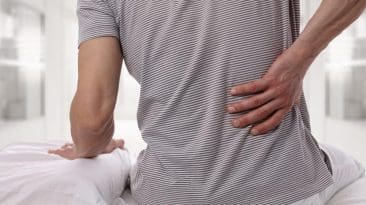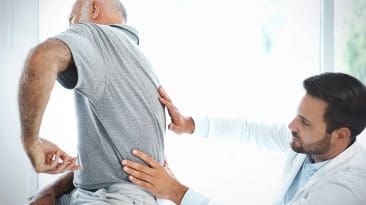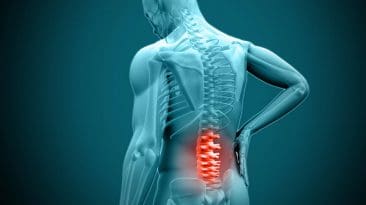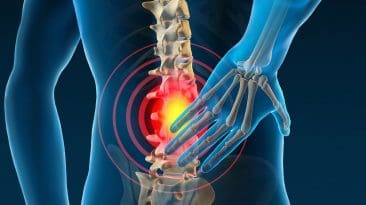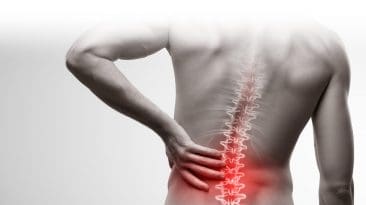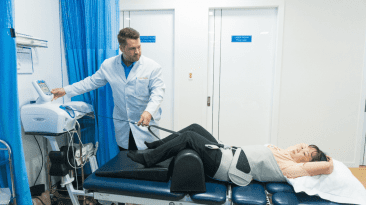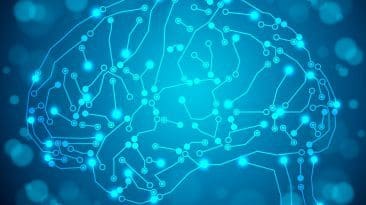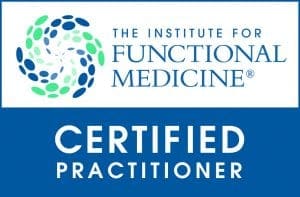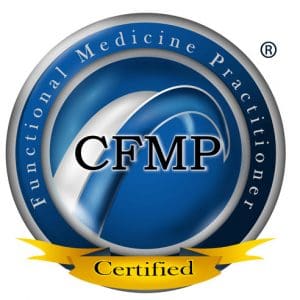Introduction The body needs the spine to stay upright, bend, move, twist, and turn to function properly. The spine is an S-shaped curve structure...
Category - Spinal Decompression Insights
Spinal Decompression Insights: Dr. Alex Jmenez, Chiropractor Discusses: Spinal Decompression Therapies, Protocols, Rehabilitation, and Advance Treatments Care Plans
At our offices, we offer conservative care for degenerative spinal conditions, including several treatment modalities. Thus, the traction distinguishes as it can elicit the body’s protective proprioceptive response to distraction, reducing intradiscal pressure and minimizing symptoms secondary to disc herniation and axial pain.
Our integrative treatments aim to determine the clinical effects of a short treatment course of motorized axial spinal decompression for patients with pain and physical impairment caused by either lumbar or cervical degenerative disc pathology with no immediate surgical indication.
Conservative care for mid to long-term degenerative spinal conditions with axial and irradiated pain generally includes pharmacological treatment, physical rehabilitation, or injections. Mechanical traction is an old treatment modality, which has been decreased in use facing other modern technologies or utilized in combination with other treatment modalities, such as manual therapy, exercises, heat, or electrotherapy. We, too, offer advanced spinal treatment workshops and boot camps to help educate patients on the dynamics of spinal hygiene.
Our patients get treated for chronic radicular axial spinal pain. This is a referred pain in the spinal axial skeleton and is considered a syndrome with both nociceptive and neuropathic pain components. Patients report improvement in symptoms with a reduction of the axial load in the spine.
Previous studies have shown a decrease of pressure in the intervertebral disc after traction, unloading of the spinal structure, and alleviating the inflammatory reaction of the nerve roots. Here, we present our patients’ literature and scientific background information to make educated decisions about the advanced spinal decompression protocols.
If you’re looking for a non-surgical solution for your persistent back or leg pain, you may want to try spinal decompression therapy. Unlike invasive or laparoscopic surgeries, spinal decompression does not require the patient to go under the knife. Instead, the patient’s spine is stretched to relieve back and leg pain. The goal of spinal decompression is to create an ideal healing environment for the affected areas.
This treatment is typically used for:
Bulging discs
Degenerating discs
Herniated discs
Call us today to schedule your first appointment! Our team in El Paso is happy to help.
Introduction The spine is encompassed by ligaments, the spinal cord, nerves, and discs that ensure that the entire body is upright and allow it to...
Introduction The body makes sure that the spine is keeping it upright as the body allows the spine to twist, bend, and turn in different positions...
Introduction The spine is encompassed by soft tissues, the spinal cord, ligaments, and cartilage in an S-shaped curvature in the back. The...
Introduction As a support structure connected to the musculoskeletal system, the spine makes sure that the body stays upright, moves, bends, sits...
Introduction The body is a well-tuned machine that makes sure that it moves constantly and functions appropriately. The body is also home to...
Introduction The brain’s primary function is to make sure that the neuron signals are being transmitted and transported throughout the entire...
A herniated disc can cause a lot of pain to patients. Most often patients who suffer with herniated discs have problems walking, bending, or...







